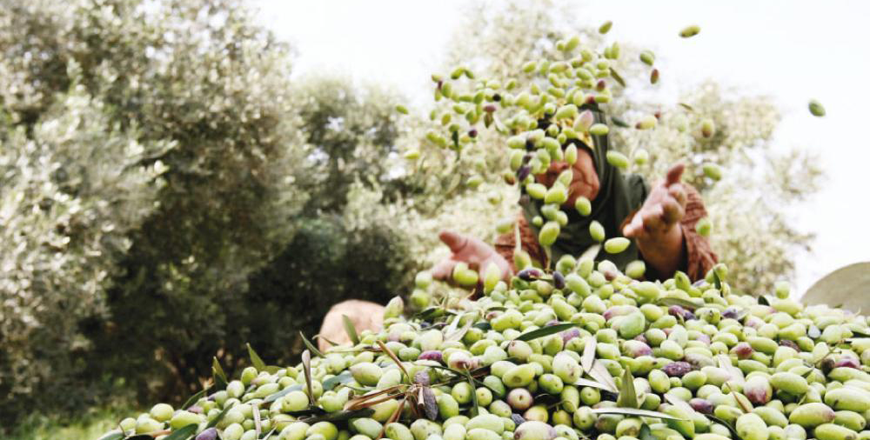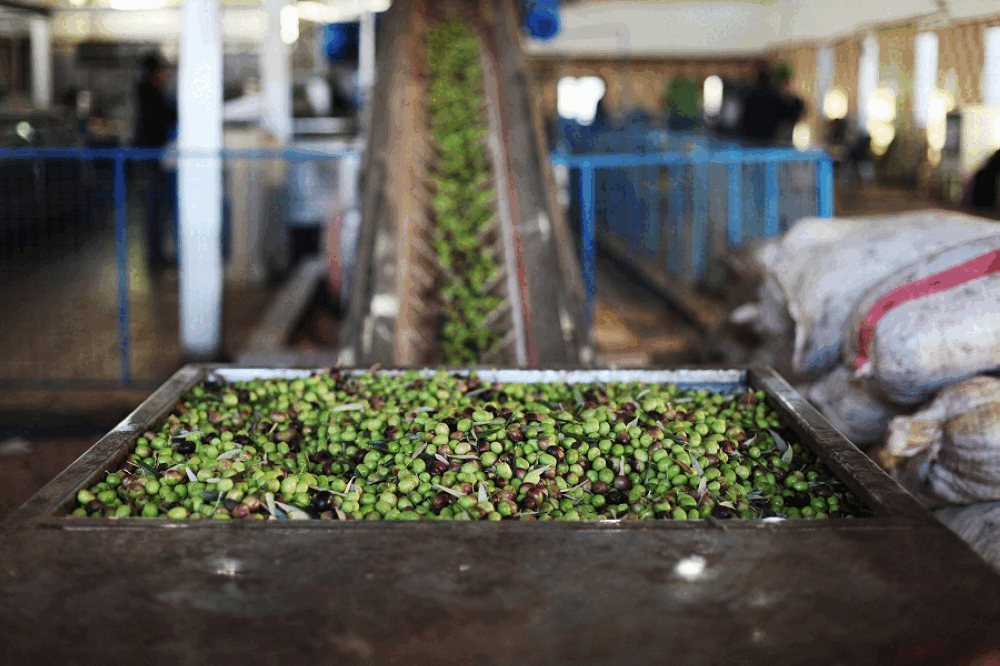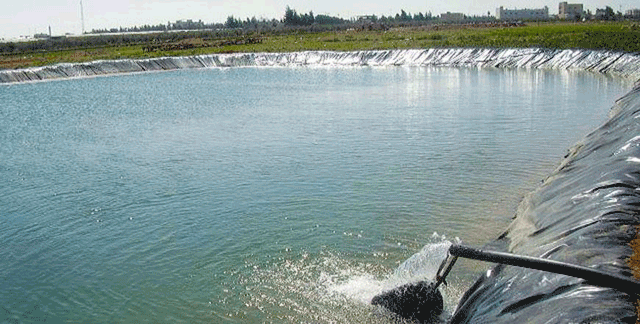You are here
Changing times for olive groves: The impact of climate change on olive cultivation in Jordan
By Mohammad Ghazal - Jun 13,2023 - Last updated at Jun 13,2023

According to Jordan’s Agriculture Ministry, the olive tree is one of the most important trees planted in Jordan, covering about 72 per cent of the country’s total fruit tree area, and around 30 per cent of the total cultivated area (JT photos)
- More than 80,000 families in Jordan work in olive cultivation
- Self-sufficiency rate of olive production to decline to 55% by 2050, says study
AMMAN — On his farm in Irbid in northern Jordan, Barakat Omari gazes out upon his olive grove, a legacy passed down from his father. However, his countenance is marked not by tranquillity, but by concern. The grove’s 400 olive trees, some with roots reaching deep into the past century, no longer produce as they once did. The culprit? A subtle but relentless adversary: climate change.
Omari’s farm was once buzzing with activity, with trucks filled to the brim with olives rumbling across his father’s land. That was 20, 30 years ago. Now, the trucks are scarce, and his bounty has dwindled to less than a third of previous harvests. From a robust 400 kilogrammes of olive oil annually, he now extracts a mere 90 kilogrammes from the very same trees.
At 68, Omari has dedicated over four decades of his life to the art of olive farming. He carries the knowledge and experience passed down from his father, shown in hands weathered by harvests past. But he stands at a crossroads, facing the unsettling reality of dwindling returns and the prospect of changing the only life he has ever known.
Climate change has altered the rules of the game.
“The ageing trees are not the main culprits. It is the shifts in weather patterns that are the real cause of this situation. My olive trees, which are accustomed to rains that once nourished them before the September harvest, are left parched, thirsty for the skies to rain,” he told The Jordan Times.
“In the past, it used to rain so heavily that on many occasions we had to halt olive picking because of the torrents. Those days seem like a distant memory now,” he said, adding that the olive oil produced by these trees financed his children’s education.
“It has been the lifeblood of my family, providing for my wife, two daughters and three sons — two of whom are married now,” he said.
Driven by necessity, Omari is contemplating a heart-wrenching decision.
“I am thinking of uprooting my olive trees to plant more water-resistant, higher-yielding crops that could mean economic survival, but this will be the end of a cherished family legacy; I have no option. We have no control over the rain,” he said.
Omari’s story serves as a poignant reminder of the human face of climate change. The impending crisis is about more than just data and trends. Its consequences are felt by real people, harming their livelihoods and their traditions. Omari is one of more than 80,000 families in Jordan that, according to the National Agricultural Research Centre, work in olive cultivation. The olive industry represents a basic social and economic pillar of the Kingdom, contributing around JD135 million in sales, exports and labour to the local economy.
“Olive oil is the principal culinary fat and an essential component of the Mediterranean diet,” the International Olive Oil Council says. According to UNESCO, the Mediterranean Basin countries, including Jordan, are the driving force behind 95 per cent of the world’s olive oil production.
According to Jordan’s Agriculture Ministry, the olive tree is one of the most important trees planted in Jordan, covering about 72 per cent of the country’s total fruit tree area, and around 30 per cent of the total cultivated area. There are around 11 million olive trees in Jordan, with annual production of 180,000-200,000 tonnes of olives.
Olive oil production has been fluctuating. In 2019, the country produced 34,720 tonnes of olive oil, which decreased to 24,400 tonnes in 2020, dropping again to around 23,000 tonnes in 2021, according to official figures.
“A little over 70 per cent of olive trees are grown in rain-fed areas where average rainfall is more than 300 millimetres (mm). The rest of the trees are grown using irrigation methods… Climate change has been hitting the sector for years, as erratic rainfall and changes in the intensity and location of rainfall has become more evident over the past years,” a government official, who preferred anonymity, told The Jordan Times.
“Jordan’s 3000 year old olive groves — some of the oldest and finest in the world — are increasingly threatened by climate change and water scarcity, which has been becoming more difficult over the years. With business-as-usual scenarios, the situation will not be promising,” the official added.
The ramifications of climate change are already affecting the olive oil sector, and without enacting rapid change, Jordan’s self-sufficiency percentage of oil will start to decline from its current 102 per cent, said University of Jordan professor Jawad Al Bakri at a recent meeting over the country’s fourth National Communication Report to the United Nations Framework Convention on Climate Change (UNFCCC).
An assessment study presented by Bakri showed that with the business-as-usual scenario, coupled with rainfall shortages and projections of a deeper water deficit, the self-sufficiency rate of olive production will decline to 55 per cent by 2050, 34 per cent by 2070 and 17 per cent by 2100.
Jordan’s agricultural sector, which consumes around 50 per cent of the country’s available water resources, is facing many challenges when it comes to water availability, as heat affects evaporation.
Recent research has shown that the average increase in water requirements for irrigated olive trees would be 7.4 per cent by 2050, 11.4 per cent by 2070 and 13.4 per cent by 2100, according to Jordan’s 4th communication report. On average, the increase in irrigation depth would be more than 107mm. The increase in irrigation depth by year 2100 would reach 121mm for grapes, 135mm for peaches and apricots, and 136mm for olives, the 4th report showed.
Water challenges continue
The water challenges continue with Jordan’s status as an arid country, with more than 90 per cent of the territory receiving less than 200mm in annual precipitation. Precipitation across the country ranges between 50 and 500mm annually, depending on location. The amount of rainfall decreases from north to south and from west to east.
Due to its arid climate and limited water resources, Jordan is ranked as the second-most water scare country in the world, and has the lowest per capita share of water globally.
Per capita shares of water stand at less than 75 cubic metres per year, which is almost 8 per cent of the internationally recognised water poverty line.
Jordan’s available water resources currently measure some 1.166 billion cubic metres (bcm), while annual demand hovers around 1.450bcm. The water deficit is expected to reach 835 million cubic metres by 2050, 1.240bcm by 2070 and 1.995bcm by 2100, according to Bakri.
Compounding the issue, Jordan has experienced an increase in average temperature of 0.4°C per decade since the 1970s.
Jordan’s Third National Communication on Climate to the UNFCCC noted that increasing evaporative demand, owing to rising temperatures, could increase irrigation requirements by between 5 and 20 per cent or possibly more, by the 2070s.
According to the updated Nationally Determined Contributions (NDCs) report, all models predict a warmer climate with strong confidence in temperature increases.
By 2070 to 2100, average temperature increases could range between 2.1°C and 4.5°C. Projections predict a drier climate with medium confidence. By 2070-2100, the accumulated precipitation could decrease by a range of 15 to 35 per cent. This decrease is projected to be more marked in the western part of the country, according to the report.
All projections indicated a warmer summer and a drier autumn and winter with medium confidence. The warming would be more significant in summer, and the reduction of precipitation would be more important in the autumn and winter compared to the spring. For instance, the median value of precipitation is projected to decrease by 35 per cent by the autumn of 2070-2100. Dynamic projections also predict more heatwaves. In pessimistic but possible predictions for a summer month, the average maximum temperature for the whole country could exceed 42-44°C, according to the NDCs projections.
The projections also indicate more droughts, where the maximum number of consecutive dry days would top 30 days in the 2070-2100 period.
Is a remedy still possible?
“Part of the challenge is that farmers need training sometimes. Most of the time they leave olive trees without trimming and without any care. This is part of the problem, but the major impact is from climate change, which we are working on addressing on different fronts,” an official at the Ministry of Environment told The Jordan Times.
“We have projects to enhance drip irrigation and train households on water harvesting solutions, and we have some capacity training programmes. Some of the projects are ongoing, but many other adaption projects are in need of support from donor countries, as we cannot implement them alone,” the official added.
The National Climate Change Policy 2022-2050, states that 15 per cent of the population derives an income related to agricultural value chains, with 5 per cent of the Kingdom’s households already food insecure and 7.5 per cent considered to be vulnerable to food insecurity. The policy entails measures including the implementation of a climate change and food security resilience investment plan, economic incentives for climate change mitigation and adaptation programmes for farms, the activation of land use laws to avoid urban expansion on agricultural lands and the modification and implementation of policies and action plans with an emphasis on socio-economic strategies.
The measures also include improving irrigation system efficiency, developing soil-water-plant monitoring programmes, enhancing water harvesting techniques, maximising treated waste water re-use, introducing and diversifying highly productive crops able to tolerate salinity and heat conditions, as well as producing and promoting an agro-climatological calendar.
The measures also include projects to support conservation agriculture, promoting organic, biodynamic, minimum conservation tillage, fallow practices, supporting environment-friendly agriculture and permaculture designs, promoting hydroponic and other water-tolerant agricultural productivity systems, enhancing drought management systems, strengthening the institutionalisation and deployment of existing early-warning systems and strengthening the financial resources available to compensate drought-affected farmers.
“We will not remain silent in the face of challenges, but we need the support of all, as it is unjust that those most vulnerable to the impact of climate change are left all alone,” the official said.
This story was produced with support from the Earth Journalism Network.

Related Articles
Jordan contributes a negligible amount of emissions to the overall emissions. However, the water-poor country is particularly vulnerable to the impact of climate change, and many economic sectors are susceptible to the ramifications of climate change.
AMMAN — Estimated water losses due to repeated instances of water theft amounted to about 9.58 million cubic metres last year, Water a
AMMAN — A source of income for thousands of Jordanian families and a sizzling commodity present in all households across the Kingdom, olive














